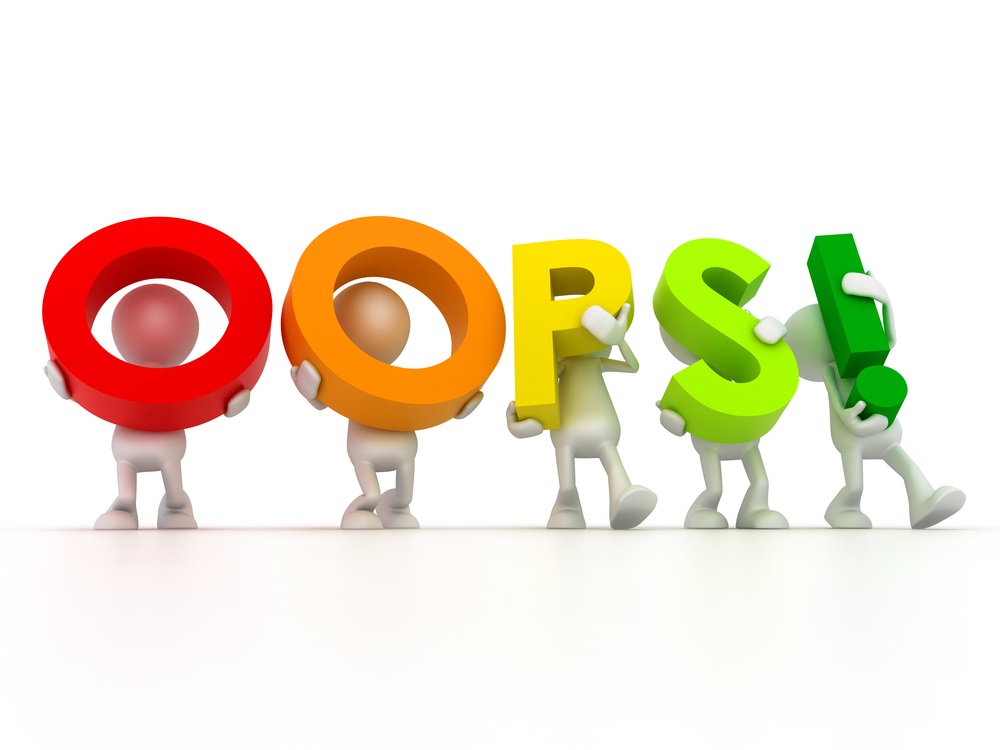A recent study discussed on Brand 1 shows that as the processes in most companies become more highly optimized, many organizations begin to more closely resemble bureaucratic administrations than thriving business entities.
A majority of the employees interviewed reported that working strictly by the book leaves them uninspired and demotivated. Top management, on the other hand, wished that their employees would engage more creatively in moving the goals of the business forward. And so it seems that many organizations wish for more vibrancy and drive — especially after reaching mid-size — while their employees feel systematically driven to boredom and lack of motivation.
Locking in Mistakes for Freshness
"My mistakes are locked in for freshness" — that is the self-description of a blog writer I came across on the internet the other day. I found his articles fun to read, inspiring and fresh. Instead of mistakes, I saw a lot of unique ideas and creative thoughts. The outcome was beautiful and very marketable. Embracing mistakes was the crucial success factor that helped this writer make his work process more effective and creative at the same time.
The following examples show that risking mistakes and achieving success are not mutually exclusive:
- Two famous chefs, who claim to just randomly throw ingredients together and use their unique expertise to turn an unusual combination into something magical.
- A successful marketing agency that rewards the biggest flops to get their employees to share creative ideas without risk of failure.
- The Rocketdyne team that managed to design a reusable rocket engine in 1% of the hours and one-tenth of the time span it took to develop its predecessors — by deliberately partnering with non-experts and by keeping the collaboration entirely virtual.
Structure Drives Behavior
Structure drives behavior. We cannot expect the members of an organization to maintain the drive, energy and spirit they display during start-up times if we only implement processes optimized to support the overall administrative machinery and ignore the importance of individual creativity. To stimulate engagement, we need to encourage people to be themselves, bringing their unique personalities and ideas into the processes they are expected to drive. True, not every department calls for creativity and not every department has room for a lot of mistakes. But most departments are more productive when employees are engaged and motivated.
Making both ends meet
How can we make both ends meet and create organizational niches that allow people the freedom to experiment with ideas that drive the overall goals of the organization or that particular unit? The most workable and sustainable answer, in my eyes, must come from within the individual organization itself — but here are some suggestions that may point towards a healthy direction:
- Be creative. Allow the people in your organization to contribute ideas as to how routines in their department could be broken up in ways that create more motivation and increase effectiveness at the same time.
- Provide the space for work-groups, think tanks and innovation catalysts to meet in both informal and formal ways.
- Leverage your collective intelligence: Open up the informal and formal think tanks and innovation meetings to EVERYONE. Who said that it takes a person from the research department to produce all the answers they are looking for? Random thoughts from a different perspective might re-energize your thought process and produce an unexpected new answer for you to take further.
- Establish rules of courtesy and respect around the creative process: Creativity, drive and motivation only work if every voice is encouraged and further developed regardless of how much sense it seems to make initially.
- Set expectations for and limitations to the process: Understand that innovation slam sessions are just that. Ideas come and go, they can be taken further, or not — there is no ownership of any thought — it is all out in the open. Treating each other and each others ideas with the utmost respect is crucial in keeping the process alive.
- Use modern technology to the fullest: Blogs, innovation group platforms, white boards — anything that springs to mind that helps to drive your innovative process further.
- Develop a meta-process to monitor concerns, hopes and inter-process dynamics. Reflecting about the process can be as creative and helpful as the sessions themselves.
- Keep the spirit of the sessions and platforms light-hearted, self-driven, self-organized and self-empowered. It will pay off in the long run.
- Start small. An innovative process in place in just one team is better than none at all or trying it with the entire organization too hastily.
- Enjoy the process.
These suggestions may sound scary: Why give up a routine that is actually working? Why risk effectiveness? The long and the short of it is: Trying out new ideas and new things might result in mistakes, even failure, but it could also lead to something unique. Creating separated meta-processes that allow stakeholders to make mistakes, but spark creativity, motivation and drive in people, may be out of everybody’s comfort zone initially. However in the long run this approach may be more effective than trying to make up for lack of drive with extensive learning and development initiatives or financial incentives. Yes, trying this out in your organization could go wrong, but imagine the power your organization will have if it goes right.





